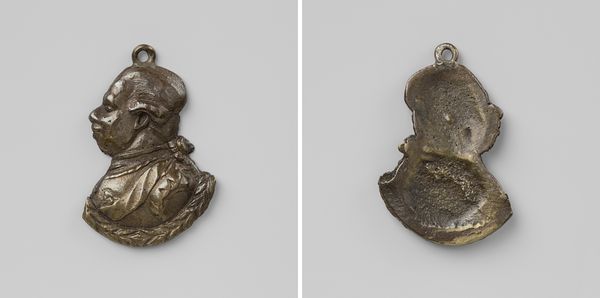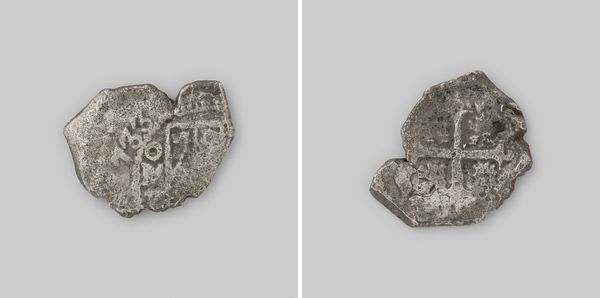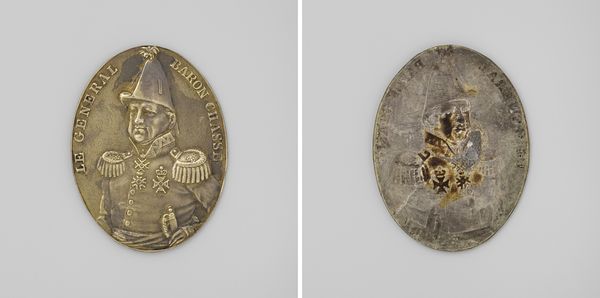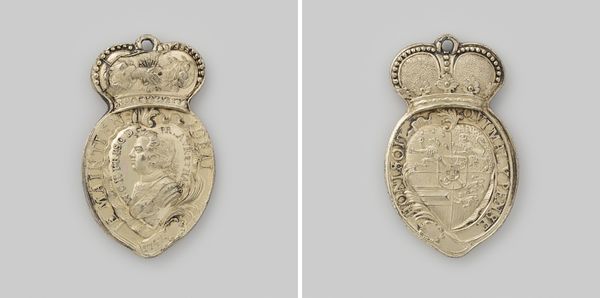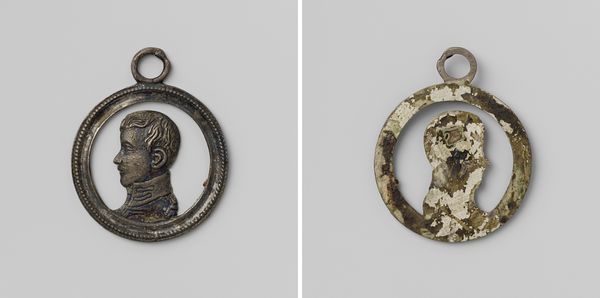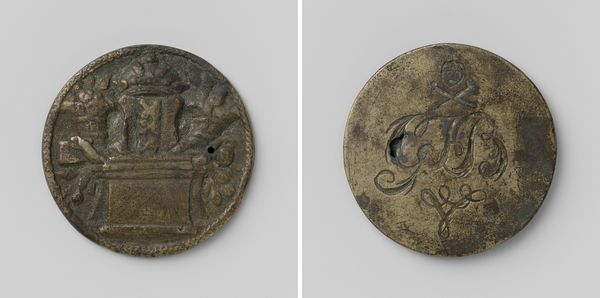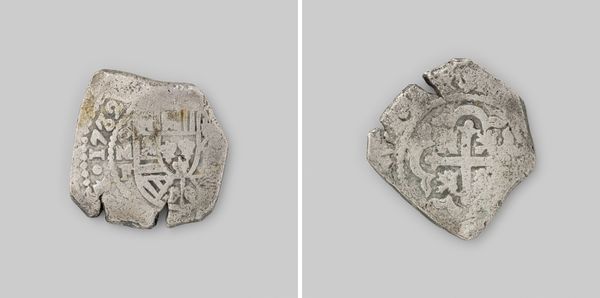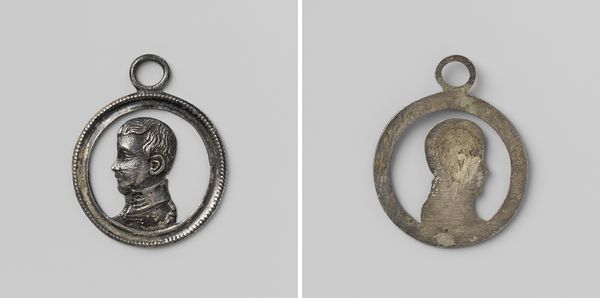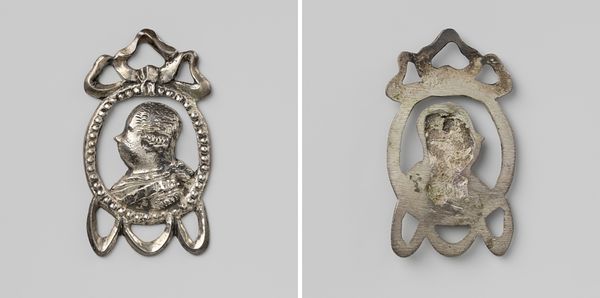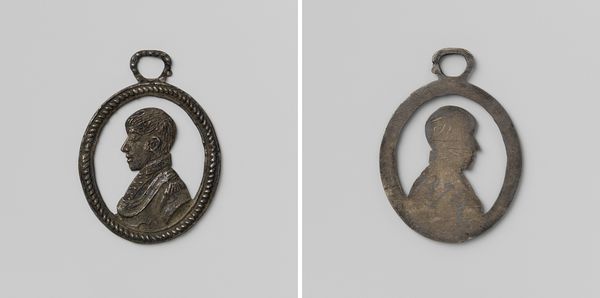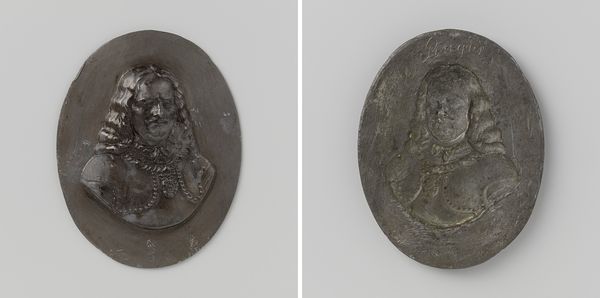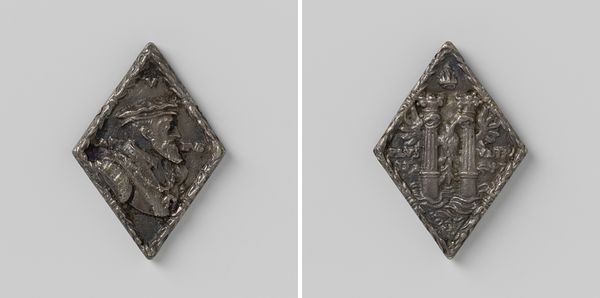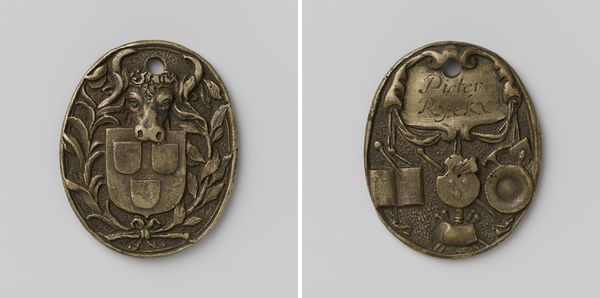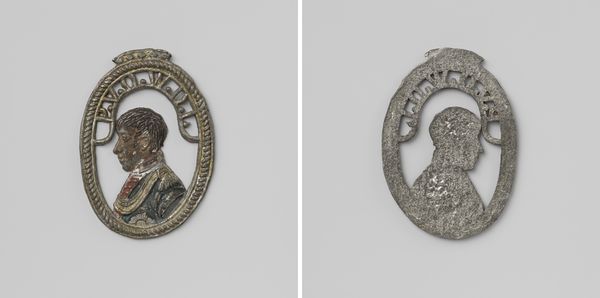
metal, sculpture
#
portrait
#
baroque
#
dutch-golden-age
#
metal
#
sculpture
#
sculpture
Dimensions: height 3.2 cm, width 2.7 cm, weight 0.36 gr
Copyright: Rijks Museum: Open Domain
Curator: This intriguing metalwork is a depiction of Piet Pietersz. Hein, dating from 1628-1629. Editor: There's an immediacy to this that's striking, a stark simplicity to the portrayal. Almost talismanic. Curator: Precisely. While it currently resides at the Rijksmuseum, these kinds of portraits served very different functions then. In terms of cultural and symbolic weight, a sculpted object like this acts as more than a commemorative. Editor: So it’s about perpetuating his status, his legacy in society. How exactly did the public in 17th century Netherlands view Hein? Curator: Hein was, and arguably remains, a complicated figure. While he became an celebrated admiral in service of the Dutch West India Company, known especially for his capture of the Spanish treasure fleet, we cannot separate this valor from its location within histories of piracy and colonialism. This emblem participates in a construction of his role. Editor: I notice the inscription etched around the edges—was that part of imbuing this object with historical authority? A conscious act of enshrining meaning? Curator: Without a doubt. These portraits offer selective truths about both the figure and the world around him. They reify notions of success through naval conquest at a time when the Dutch Republic sought to project power on a global stage. I would go even further. Look at how his strong features are softened, perhaps, made even more refined by the metal. He’s idealized to ensure a very particular version of the historical Piet Hein is disseminated. Editor: An active project of memory shaping. Looking closely, what is it made of? I’d assumed silver. Curator: Indeed, I suppose "metal" is rather broad. Silver provides an aristocratic veneer, burnishing a military hero. Though his power depended on fleets, capital, and geopolitics, it is still *his* power that the symbolic language memorializes. It suggests timelessness too, almost, by enduring past his time, still holding lessons. Editor: Well, in an object so readily reproducible – it’s clear there’s a piercing to turn this into a pendant – one wonders if this potent imagery has indeed lasted to fulfill its initial purpose, continuing to spread these cultural values… Curator: Ultimately, in art, symbolism shapes both the narrative of those represented and those doing the representing. I find its compact form – it is hard and solid, yet intimate – encapsulates the complexities and enduring legacy of its historical context. Editor: This reflection on a single piece of sculpted metal really reveals how powerfully images can solidify public memory through symbolic visual tools.
Comments
No comments
Be the first to comment and join the conversation on the ultimate creative platform.
